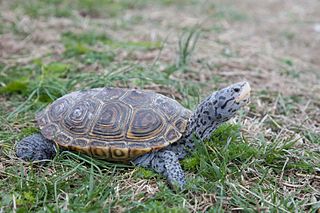
A raven is any of several larger-bodied species of the genus Corvus. These species do not form a single taxonomic group within the genus. There is no consistent distinction between "crows" and "ravens", and these appellations have been assigned to different species chiefly on the basis of their size.

Cobra is the common name of various elapid snakes, most of which belong to the genus Naja.

The Alpine swift formerly Apus melba, is a species of swift. The genus name is from the Ancient Greek takhus, "fast", and marptis, "seizer". The specific name melba comes from ‘melano-alba’ or ‘mel-alba’; Eigenhuis & Swaab (1992) posited that ‘melba’ might be a short form for ‘melano-alba’ or ‘mel-alba’. Linnaeus certainly referred to these two colors in his diagnosis.

The little swift, is a small species of swift found in Africa and southwestern Asia, and are vagrants and local breeders in southern Europe. They are found both in urban areas and at rocky cliffs where they build nests in a way typical of all members of the order Apodiformes. The genus name Apus is Latin for a swift, thought by the ancients to be a type of swallow without feet. The Latin specific affinis means similar to or related to, but in this case the species that the little swift supposedly resembles is not clear from the description. A population formerly considered to be an eastern subspecies of little swift is now separated as a distinct species, the house swift.

A midge is any small fly, including species in several families of non-mosquito Nematoceran Diptera. Midges are found on practically every land area outside permanently arid deserts and the frigid zones. Some midges, such as many Phlebotominae and Simuliidae, are vectors of various diseases. Many others play useful roles as prey items for insectivores, such as various frogs and swallows. Others are important as detritivores, and form part of various nutrient cycles. The habits of midges vary greatly from species to species, though within any particular family, midges commonly have similar ecological roles.

Polecat is a common name for mammals in the order Carnivora and subfamilies Ictonychinae and Mustelinae. Polecats do not form a single taxonomic rank. The name is applied to several species with broad similarities to European polecats, the only polecat species native to the British Isles, such as having a dark mask-like marking across the face.

Tankwa Karoo National Park is a national park in South Africa. The park lies about 70 km due west of Sutherland near the border of the Northern Cape and Western Cape, in one of the most arid regions of South Africa, with areas receiving less than 100 mm of average annual precipitation, moisture-bearing clouds from the Atlantic Ocean being largely stopped by the Cederberg mountains. Other low areas receive little more, as the Roodewerf station with 180 mm of mean annual rainfall. In the hottest areas of the park, the mean maximum temperature in January is 38.9 °C, and in July the mean minimum temperature ranges from about 5 to 7 °C. Before this Park's proclamation, the only protected area of Succulent Karoo was the 2 square kilometre patch of the Gamkaberg Nature Reserve. Succulent Karoo has, together with the Cape Floral Kingdom, been declared a Biodiversity Hotspot by Conservation International.
Black ironwood is a common name for several plants and may refer to:
Kaffir or Kafir may refer to:
Bullfrog is a common English language term to refer to large, aggressive frogs, regardless of species.

Black wattle is the common name for a number of species of trees that are native to Australia, as listed below:
Bates's swift is a species of small swift in the family Apodidae which is found in western Africa.

Terrapins are one of several small species of turtle living in fresh or brackish water. Terrapins do not form a taxonomic unit and may not be related. Many belong to the families Geoemydidae and Emydidae.

Sagebrush is the common name of several woody and herbaceous species of plants in the genus Artemisia. The best known sagebrush is the shrub Artemisia tridentata. Sagebrushes are native to the North American west.
P. nigricans may refer to:
Goshawk may refer to several species of birds of prey, mainly in the genus Accipiter:
The purple swamphen has been split into the following species:
Black-headed batis may refer to:
This page is based on this
Wikipedia article Text is available under the
CC BY-SA 4.0 license; additional terms may apply.
Images, videos and audio are available under their respective licenses.









